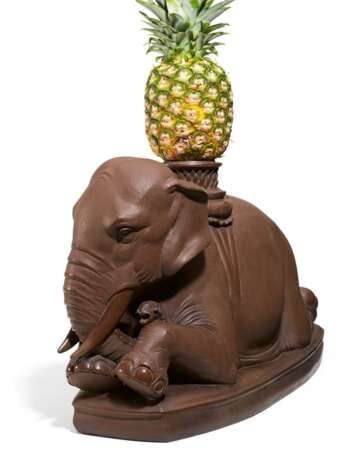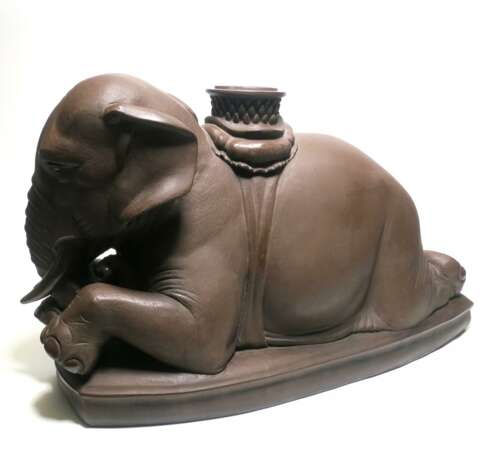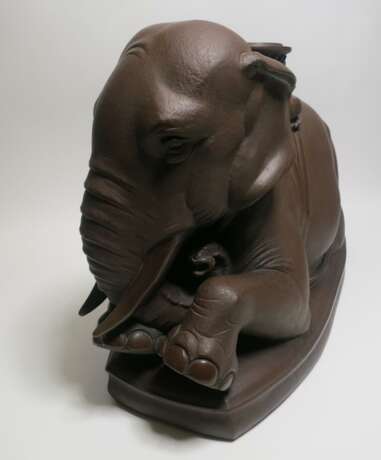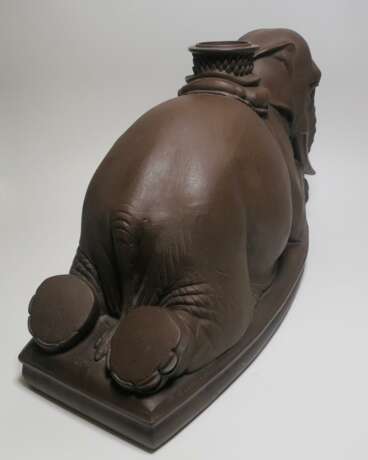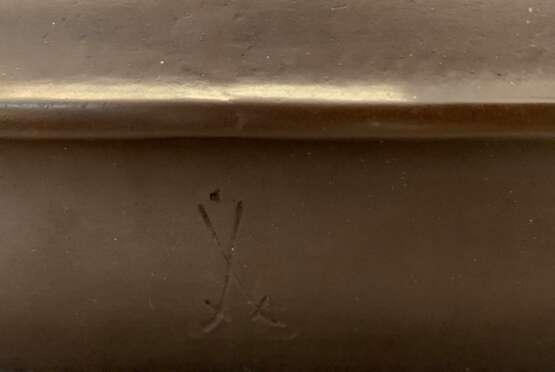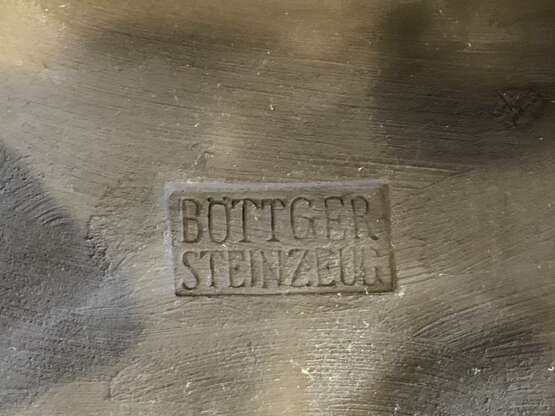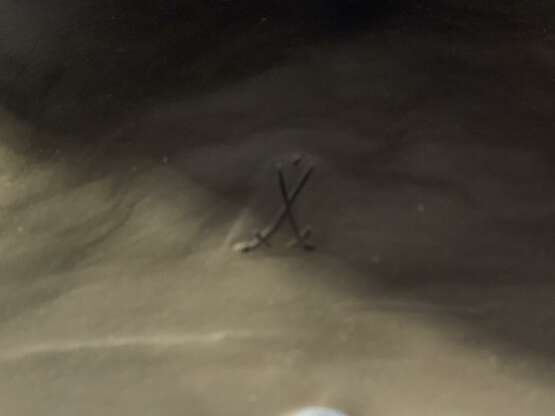ID 332674
Lot 438 | RUHENDER ELEFANT
Estimate value
€ 6 000 – 8 000
Meissen.
Datierung: 1924-34.
Meister/Entwerfer: Entwurf Max Esser, 1924. Ausformung Nr.10 von 55.
Material: Böttgersteinzeug.
Beschreibung: Auf schlanker Plinthe ein lang ausgestreckter Elefant liegend, den Kopf leicht zur Seite
geneigt. Die Oberfläche naturalistisch fein strukturiert, die Haptik der Haut eines
Elefanten nahezu in Perfektion nachahmend. Einzelne Bereiche, wie Stoßzähne, Fußnägel oder
auch die Ränder der Ohren fein poliert. Auf der Mitte des Rückens eine runde Halterung mit
vegetabilen Elementen zur Befestigung einer flachen, großen Schale.
Maße: Höhe 38cm, Länge ca. 60cm, Breite ca. 25cm.
Marke: Geritzte Pfeiffermarke hinten auf Sockel sowie innen. Innen weitere Präge und Ritzmarken: "Böttger Steinzeug", "Von 55 Ausformungen No.10", 736, A 1087, L245.
Marke: Hinten auf dem Sockelrand bezeichnet "M. Esser 1923".
Zustand C.
Literatur:
- Bröhan, Karl H. (Herausgeber): Porzellan, Kunst und Design 1889 bis 1939, Vom Jugendstil zum Funktionalismus, Bestandskat. Böhan-Museum, BandV.2., Berlin 1996. Zu einer Modellvariante des Elefanten siehe S.112, Nr.92 und zu Max Esser als Tierplastiker S.108.
- Marusch-Krohn, Caren: Meissener Porzellan 1918-1933, Die Pfeifferzeit, Leipzig 1993. Zu Max Esser siehe S.105ff.
Als Schüler August Gauls avancierte Max Esser zu den führenden Tierplastikern zur Zeit Pfeiffers. Er begann seine Karriere zunächst bei den Schwarzburger Werkstätten bevor er ab 1919 als freischaffender Künstler für die nächsten Jahre bei der Manufaktur in Meissen tätig war. Darüber hinaus führte er dort ab 1923 ein sog. Meisteratelier.
Esser ersann für die Manufaktur über 100 Entwürfe. Um seine Tierplastiken so naturgetreu wie möglich darstellen zu können führten ihn Studien regelmäßig in den Berliner Zoo.
Max Esser schuf zwei Varianten des lagernden Elefanten. Einmal ohne zylindrischen Aufsatz auf dem Rücken, zum anderen, wie das hier präsentierte Modell mit einem kleinen Zylinder für den Einsatz einer großen, flachen Schale.
| Auction house category: | Art Nouveau / Art Deco |
|---|
| Auction house category: | Art Nouveau / Art Deco |
|---|
| Address of auction |
VAN HAM Kunstauktionen GmbH Hitzelerstr. 2 50968 Köln Germany | ||||||||||||||
|---|---|---|---|---|---|---|---|---|---|---|---|---|---|---|---|
| Preview |
| ||||||||||||||
| Phone | +49 221 92586215 | ||||||||||||||
| Fax | +49 221 92 58 62 4 | ||||||||||||||
| Buyer Premium | 32% | ||||||||||||||
| Conditions of purchase | Conditions of purchase | ||||||||||||||
| Business hours | Business hours
|

